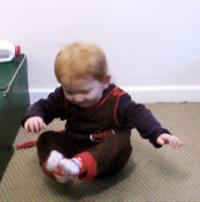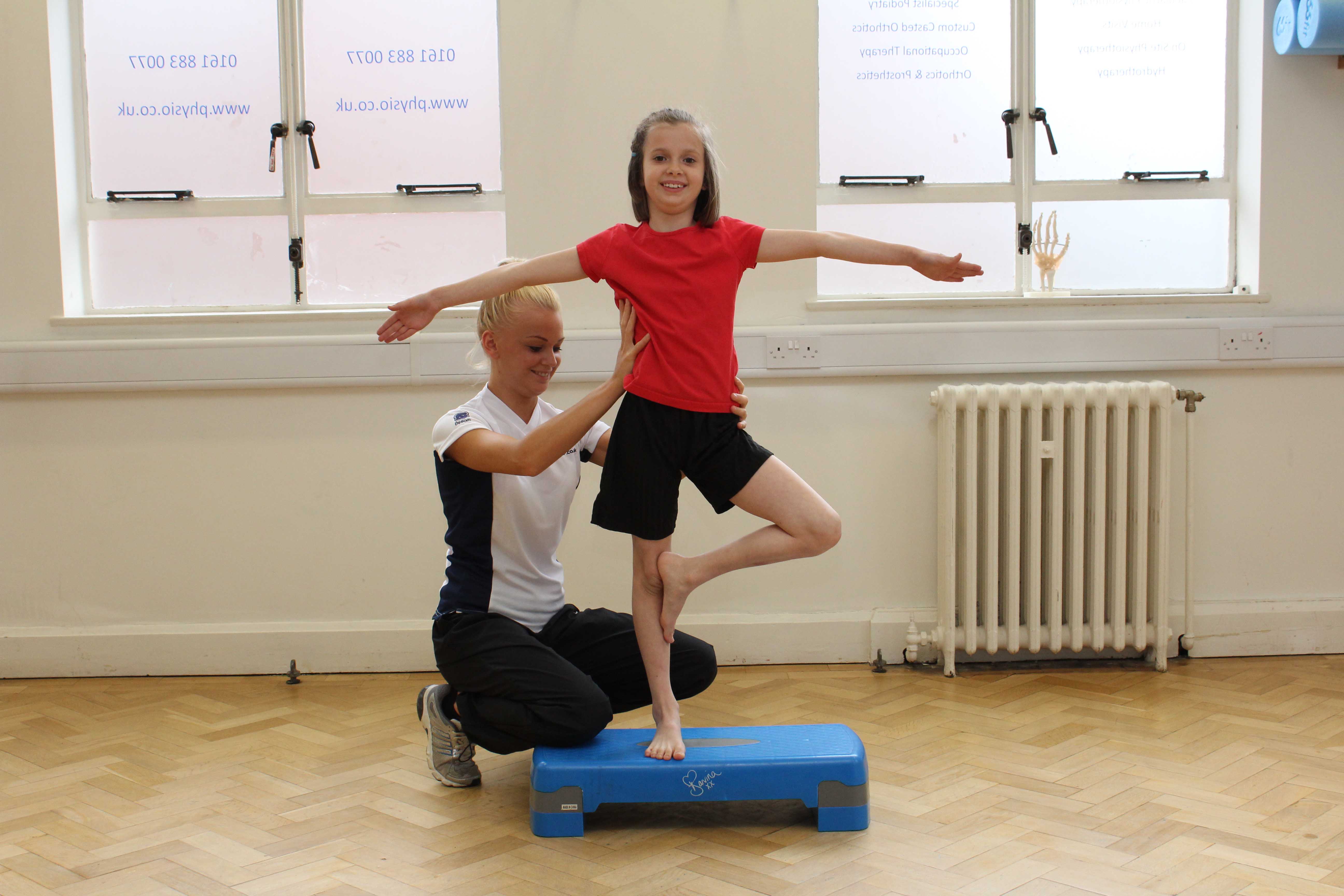hypermobility in babies uk
Individual appointments start at just 20 per 30 minutes. It is sometimes referred to as being double jointed and is quite common about 1 in 10 people are hypermobile.

Positive Health Online Article Short Features And Brief Takes Issue 181 Pediatric Physical Therapy Occupational Therapy Schools Child Therapy
Hypermobility refers to an increased range of movement in multiple joints for their age.

. It is now slightly. Pregnancy and parenthood brings both joy and challenges for all women. The Hypermobility Syndromes Association is here to support everyone with symptomatic hypermobility whatever the cause however mildly or severely they may be affected and whether or not they are diagnosed.
The term muscle tone refers to the muscles readiness for action. Management of hypermobility should generally be in Primary Care. Children who have hypermobility disorder might experience it in one or more joints and might say they have loose joints or describe themselves as double jointed.
Open Mon-Fri excluding bank holidays 9am-12pm. Jo offers a range of services to suit most budgets. Hypermobility is commonly seen in young children.
With a holistic solution-focused approach to living well with a hypermobility syndrome our expert. 0300 421 6980 wwwghcnhsuk 0-16 years or 16-18 in full-time education. It is extremely common in children having being reported in 25 to 50 of those younger than 10 years of age.
Prevalence of hypermobility varies greatly depending on the literature. Up to 4 in 10 of young teenage girls and about 1 in 10 of young teenage boys have hyper-flexible joints. If you remain concerned PALS can also advise upon how to make a formal complaint.
Hypermobility refers to an increased range of movement in multiple joints for their age. It is extremely common in children having being reported in 25 to 50 of those younger than 10 years of age. Discuss self-management strategies devise flare-up plans and more.
A joint is the place on the body where two bones meet. Most children will get less flexible as they get older and should improve as the childs strength and. Often get tired even after rest keep getting pain and stiffness in your joints or muscles.
The older you are the less likely it is you will be hypermobile. Infants who appear to be floppy and have hypermobile joints are often given a diagnosis of low muscle tone. Joint hypermobility in babies and children When you have joint hypermobility it means your joints are more flexible than in other people.
Most children are flexible but some more so than others. Stand with their knees straight and put their hands flat on the floor If your child can do six of these manoeuvres they are said to be hypermobile. It affects 7 10 of school age children in the UK.
Hi I was diagnosed as hypermobile during my pregnancy. This can occur with just a couple of joints or all joints. Some children show symptoms of hypermobility in four or more joints and might experience pain as a result.
This can cause severe on-going pain. It affects 7 10 of school age children in the UK. EDS is more than just symptomatic hypermobility however as it can affect many functions of the body.
If in addition they have had pain in four or more joints for at least three months they are likely to have gHSD. The older you are the less likely it is you will be hypermobile. Hypermobility means a persons joints move beyond a normal range of motion.
It usually affects children and young people and often gets better as you get older. See a GP if you. Advice for hypermobility oxleasnhsuk Children with hypermobile joints have too much movement in their joints.
Joint hypermobility in babies and children is even more common and usually causes no problems. Joint hypermobility syndrome is when you have very flexible joints and it causes you pain you may think of yourself as being double-jointed. Generalised affects more than 5 joints in more than one limb.
Childrens Physiotherapy Direct Tel. Localised single area affected and often acquired following trauma joint disease or surgery. They may also have poor stamina and digestive or bladder issues.
The recommendation on when community management is usually appropriate is based on musculoskeletal triage guidance for children and young people RightPath 2017. How common is hypermobility. Hypermobility in babies or children is a condition whereby a child has more than normal range of movement in some or all of the joints in their body.
A child is likely be prone to injuries easy bruising and their skin may tear after minimal trauma with injuries taking longer than usual to heal. Hypermobility in babies uk At Physiocouk we also use EMSNMES in the treatment of neurological conditions such as Stroke Multiple Sclerosis and Cerebral Palsy to decrease. Hypermobility may affect just one joint or many joints.
If the sensitivity to stretch is very low the muscles are slow to respond and they appear to be weak and floppy. However for most of these children there is no associated pain. This was previously known as joint hypermobility syndrome.
Never been a problem before. About 1 in 10 children with hypermobile joints experience pain related to exercise and this is then referred to as a hypermobility spectrum disorder. Specialist areas are managing long-term conditions rare disease advocacy accessibility travel outdoors and creative activities.
It is not an illness or disease and is a normal variation. If you need advice or have feedback on a community hospital in. This readiness for action depends on the sensitivity of the stretch receptors in the muscles.
All joints have a cavity containing a small amount of fluid which allows movement to happen. For the woman with hypermobile Ehlers-Danlos syndrome hEDS or hypermobility spectrum disorder HSD the increased laxity of tissues can present increased and additional issues for which careful planning and management can help. The HMSA The Hypermobility Syndromes Association.
My 9 month old son has rolled over both ways could roll for England sit up unaided for many hours if he had to and can stand and bear weight for some time if I gentlyvery lightly hold him with one finger. Hypermobility is very common in babies and children and is often referred to as being double-jointed but that does not mean that this disorder is to be taken lightly. RightPath 2019 and expert opinion in a review article Smith and Ramanan 2013Expert opinion describes the doctors role as establishing an accurate diagnosis of joint.
Other useful information Hypermobility Syndromes Association.

What Is Hypermobility And Ehlers Danlos Syndrome Everything Babies Parenting Books Toddler Discipline Kids Parenting Expert

Joint Hypermobility In Babies And Children Emma S Diary

Pin On Baby Development Activities

Hypotonia Why Milestones Are Harder For My Third Baby Cando Kiddo Hypotonia Hypotonia Baby Pediatric Physical Therapy

How Hypermobility And Low Muscle Tone Affect Your Baby S Development Skills For Action

Alfie Thorn Is Believed To Be Among The First People In The Uk Diagnosed With Loeys Dietz Syndrome Syndrome Genetic Disorders Pet Birds

What Is Hypermobility In Babies Children Young Adults Therapy Stars

How Hypermobility And Low Muscle Tone Affect Your Baby S Development Skills For Action

How Hypermobility And Low Muscle Tone Affect Your Infant S Development Low Muscle Tone Pediatric Physical Therapy Baby Development

Hypermobility Syndrome Therapies For Kids

Hyper Mobility Syndrome Children Conditions Paediatric What We Treat Physio Co Uk

What Is Hypermobility In Babies Children Young Adults Therapy Stars

How Hypermobility And Low Muscle Tone Affect Your Baby S Development Skills For Action

How Hypermobility And Low Muscle Tone Affect Your Baby S Development Skills For Action

Pin By Leigha Kaecker On Awareness Ehlers Danlos Syndrome Mastocytosis Ehlers Danlos Syndrome Awareness Ehlers Danlos Syndrome Ehlers Danlos

Adolly Hi Reborn Baby Doll Cute Name Lucy Baby Dolls Reborn Baby Dolls Reborn Babies

How Hypermobility And Low Muscle Tone Affect Your Infant S Development Low Muscle Tone Muscle Tone Pediatric Physical Therapy Activities

How Hypermobility And Low Muscle Tone Affect Your Baby S Development Skills For Action
